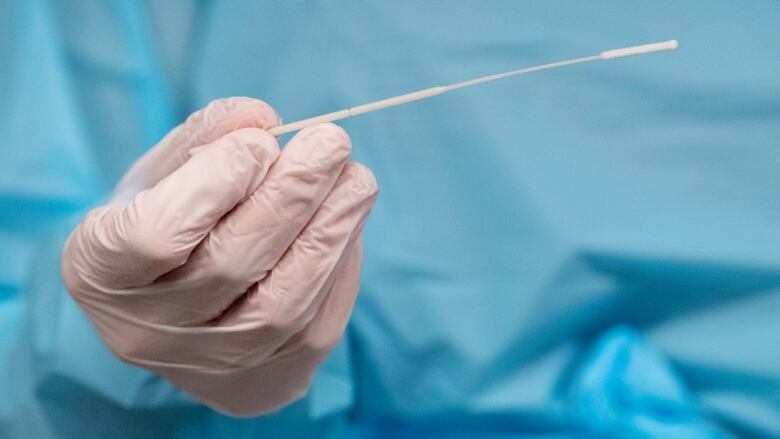Relying on Manitobans to do own contact tracing 'not ideal,' but Omicron leaves little choice, doctor says
Case numbers expected to soar due to variant, rapid testing

The Manitoba government's decision to leave COVID-19 contact tracing up to individuals themselves in most cases reflects the reality that the sheer number of cases is expected to rise dramatically with the arrival of the highly contagious Omicron variant and the wide availability of rapid tests, one medical microbiologist says.
"It's not ideal, obviously," said Dr. Philippe Lagac-Wiens, assistant professor in the department of medical microbiology and infectious diseases at the University of Manitoba.
"I do believe that we've gotten into a situation here with the Omicron variant, where it's going to be effectively impossible to contact trace all the cases that we discover."
On Monday, the provincial government's information page about contact tracing was updated to say public health officials would no longer notify close contacts in most cases.
"In some settings, such as schools, personal care homes, child care facilities, shelters, and health care facilities, public health officials will work with the facility to notify close contacts," the page says.
The change was made in anticipation of a surge of cases driven by the Omicron variant, the province said.
Chief Provincial Public Health Officer Dr. Brent Roussin said last week the role of contact tracing is diminished in situations of a highly infectious virus with a short incubation period. Public health officials would instead focus on the province's vaccination campaign, he said.
Neil McArthur, an ethicist and professor at the University of Manitoba, said the provincial government has to make a cost-benefit analysis when deciding how to use its resources, but it needs to demonstrate it has a unified strategy to combat the virus.
"I think that absolutely the government owes us access to rapid testing that is at least on par with other provinces," he said.
While provinces like Nova Scotia and Saskatchewan have made rapid test kits available for purchase in stores, Manitoba officials have limited their availability and warned that they may give a false sense of security.
On Friday, the province announced it would begin distributing rapid test kits to students in First Nations schools to be taken when they return to class after the winter holiday.
Lagac-Wiens says rapid tests could be a reasonable alternative to contact tracing, but it requires considerable effort from the provincial government to educate people about what counts as a close contact.
"I really am worried that this is going to be suboptimal, because we don't have the time to provide the training, teaching that is required, and the appropriate tools," he said.
Any attempt to impose penalties on people who test positive for the viruswho did not notify their close contacts would likely only alienate people, and would be difficult to enforce, McArthur said.
"I think that we we really do have to trust people, because really, in this pandemic, we're having to trust each other all the time."
According to the province's website, close contacts are people who you have been within two metres of for a total of 10 minutes over a 24-hour period during your period of communicability.
That period is around two days before the start of your symptoms, to 10 days after your symptoms develop.
In asymptomatic cases, the period of communicability extends from two days before the lab test to 10 days after the test.












_(720p).jpg)


 OFFICIAL HD MUSIC VIDEO.jpg)
.jpg)



























































































